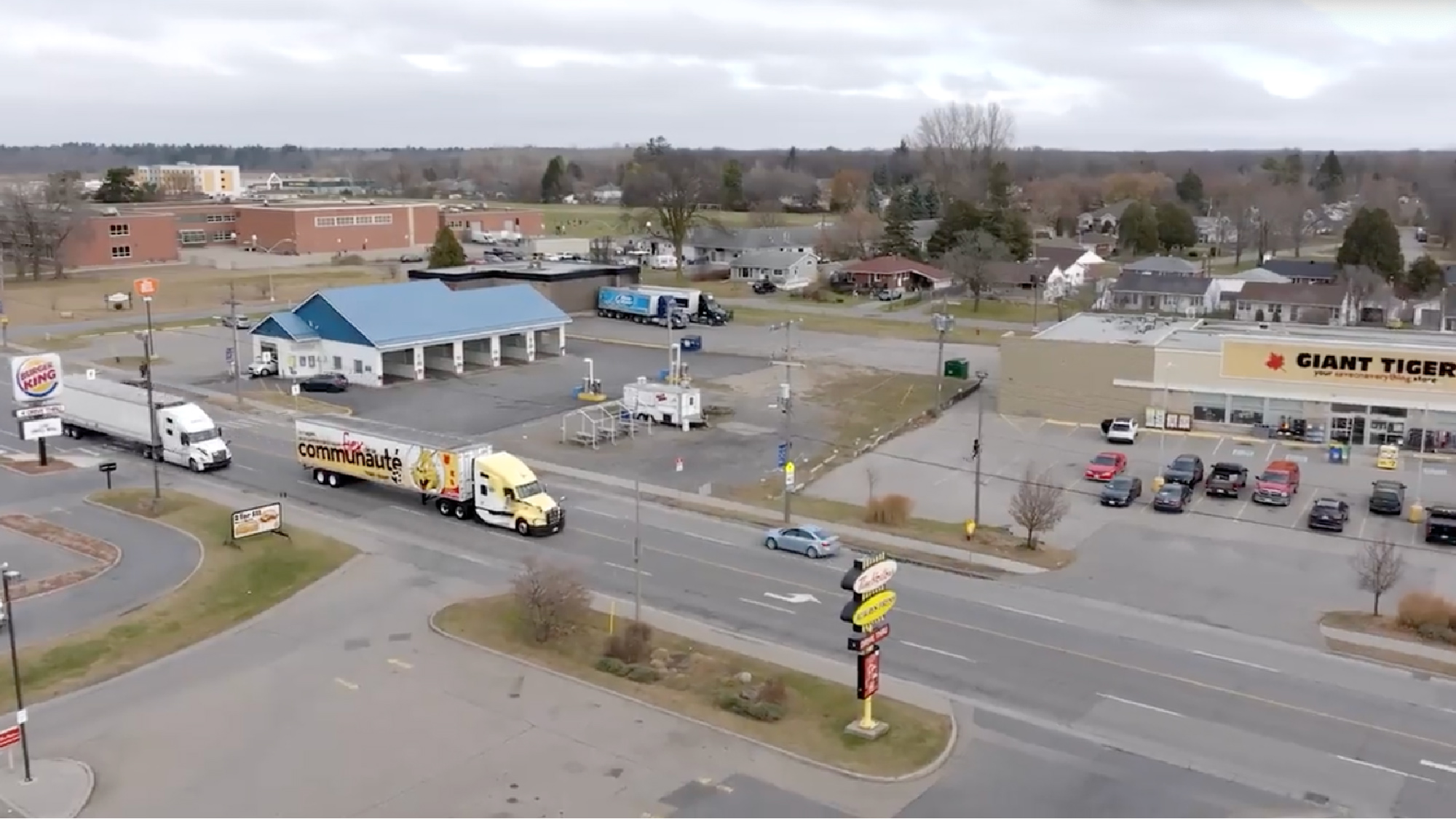
Franklin County (Ohio) Engineer’s Office: Achieving vision zero goals

Table of Contents
- Discover the difference telematics can make for improving driver safety across the fleet with Franklin County.
- The Challenge: Improving driver safety
- Achieving vision zero goals
- The Solution: ID’ing the driver
- Customized reporting
- The Results: Sticking to the facts, and just the facts
- Benefits of the Geotab Solution
Discover the difference telematics can make for improving driver safety across the fleet with Franklin County.
The Challenge: Improving driver safety
Implementing a telematics solution can be a big step for any government agency, but a successful installation across a fleet is just the beginning. Telematics solutions open the door to additional opportunities for transformative changes far beyond the initial needs and goals of the agency.
The Franklin County (Ohio) Engineer’s Office is an example of how a telematics solution can grow with the needs of an organization.
First installed about a decade ago to help with route completion of the fleet’s winter operations, over time the Geotab solution was able to capture data showing how much salt was being used and when the plow was up and down — critical data points for both the office’s measures of effectiveness and efficiency.
But after a successful decade, the team at Franklin County Engineer’s Office, which is led by County Engineer Cornell R. Robertson, P.E., P.S., focused its attention on a new challenge: improving driver safety.
Achieving vision zero goals
The priority was part of the City of Columbus’ commitment to Vision Zero, a worldwide initiative to eliminate all traffic fatalities and severe injuries. Telematics can play a critical part in achieving this goal by encouraging government workers to practice safe driving behaviors. By having the capability to monitor aggressive or unsafe vehicle operation, including swerving, harsh braking, rapid acceleration, and speeding, fleet and driver managers can take steps to correct and coach this behavior immediately furthering the goals of Vision Zero.
Jeff Markusic, fleet superintendent, Franklin County Engineer’s Office, who is a big supporter of the initiative, also sees the day-to-day impact Vision Zero can have on the driver employees and the public as a whole. “We want every teammate to come home at night,” says Markusic. “As a fleet manager, I’m interested in monitoring speed, seatbelts and driver behavior.”
But a new hurdle presented itself to the team. They needed a way to both measure and identify who was driving each vehicle and vehicle type. The good news: Geotab had a way to meet this challenge.
The Solution: ID’ing the driver
The ability to assign drivers to vehicles in MyGeotab was the solution that Markusic and his teammates were looking for. It could both assign drivers to individual vehicles and hold them accountable for their behavior. However, Markusic says he didn’t have it turned on right away. Instead, he and his team set up a series of alerts, such as for seat belt use, speeding and idling.
Markusic notes that he and the team have set tight safety parameters for the drivers. For example, speeding has a 20-second window before an alert is triggered. And even with these tight parameters, the initial results were good.
“In the beginning, when we first turned on the alerts, the drivers slowed down, but after six months the drivers got lax and started breaking the rules,” Markusic recalls.
To remedy this, they activated the Driver ID function, which required drivers to fob in to operate the vehicle. If they fail to do so, an alert is triggered. The Driver ID requirement is utilized on all the vehicle types in the fleet from light- to heavy-duty vehicles. And the results were almost immediate.
“When we assigned fobs and required drivers to swipe in, it’s amazing how quickly we went back to center,” says Markusic.
Customized reporting
Among the reasons the Franklin County Engineer’s Office has relied on the Geotab solution for a decade is its reporting capability. This was highlighted when the Driver ID capability was activated. “One of the selling points for Geotab was reporting,” says Markusic. “The beauty of Geotab is that it can take into account that each class of vehicle has different operational realities.” This helps with setting alerts and measuring activity based on the specific vehicle, instead of having to set blanket, less precise parameters.
The ability to pinpoint the location and time of an incident is vital to the team at the Franklin County Engineer’s Office. This feature provides them with a fuller picture – including any potential outliers – and can alert them to incidents, acting as a kind of reporting double check.
While reporting is one of the key benefits of the Geotab solution, for Markusic, he has also begun to take advantage of consolidated reporting for his mixed fleet.
Currently, Markusic has to reconcile separate reports manually, for each driver, since drivers could use multiple vehicle types in a given week – each having different reporting and operational parameters that need to be taken into account.
Being able to pinpoint who is driving each vehicle has allowed the team to identify those teammates who need additional help or training. “We have gotten a really good response,” says Markusic. “We give attention where it’s needed. I think the teammates appreciate it.”
In addition to coaching drivers, the reporting is used to determine awards for the safest drivers.
The Results: Sticking to the facts, and just the facts
With a largely unionized workforce, having hard facts at his fingertips has helped Markusic address any issues in accordance with fleet policy. “It has separated opinions from facts,” he says. “The entire fleet team is very data-driven now.”
And, while it is important to address any potential driving issues teammates are having and reward those who are safe and productive, Markusic sees this safety focus – from monitoring speeding to keeping tabs on idling – in a larger context. “We really just want to do everything right,” he says. “We want to be a model for the community.”
As he and the rest of the team become more agile in managing the fleet’s behavioral data, Markusic says that he wants to give special attention to any of the data points that may have been missed in the past, including focusing on any outliers. To do this, he’ll continue relying on the Geotab solution.
“Geotab has given me a really powerful tool to manage the fleet,” says Markusic.
Benefits of the Geotab Solution
- Reporting capabilities
- Ability to ID which driver is using a vehicle
- Speed, seat belt, driver behavior monitoring/alerts
Post Tags
Client profile
Client name:
Franklin County (Ohio) Engineer’s Office
Industry:
Government
Types of vehicles:
Sedans, EVs, pickups, dump trucks (class 8)
Fleet size:
176
Other stories

ENMAX Power Corporation unlocks real-time insights on fleet performance with telematics
April 9, 2025

Gerhardt Group: Digging into telematics data to drive efficiency
January 16, 2025

Giant Tiger advances fleet safety and optimization with an integrated, data-driven solution
January 8, 2025

Hunt and Sons LLC: Simplifying fleet operations through telematics data
January 8, 2025